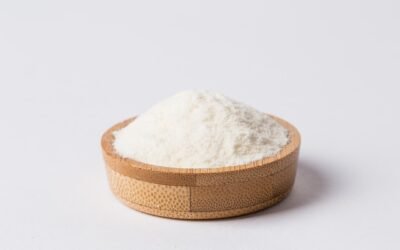Microbiota is a group of microbes living in every multicellular organism. In human, microbiota consists primarily of baceria and is located in the digestive tracts. Due to its many heath benefits, people nowadays are getting more and more interested in modulating the composition through diets in hopes the microbiota can help avoid and even cure certain diseases.
Microbiota in the digestive tract does contain a diverse array of microbe, most of which positively affect our metabolism, immune system, and our overall health. The microbiota composition is a result of many factors, such as genes, ages, stress levels, and other enviromental factors like each individual’s eating habits. What we eat is very important. The microbiota can be modulated as we consume foods that are sources of dietary fiber and prebiotics.
Prebiotics themselves are substances selectively fermented in the guts to accelerate changes in the microbiota composition or activities to give more benefits for the health. So it’s safe to say that not every type of dietary fiber can be classified as prebiotics, but nearly every type of prebiotic can be classified as dietary fiber.
As we all know, prebiotic dietary fibers are available in abundance in fruits and vegetables. But the never-ending innovation in the food industry has also made it possible for us to get prebiotic dietary fibers in the form of multi-purpose creamer like FiberCreme, which according to an in vitro study is shown to have positive prebiotic activity scores. It means that FiberCreme can definitely be used to modulate the growth of good bacteria in the guts and for your overall health.
The good bacteria’s existence has been proven to havemany health benefits. For example, Bifidobacterium and Lactobacillus in the digestive tract can relieve constipation, prevent diarrhea, and reduce intestinal inflammation. High concentration of Bifidobacterium can even reduce the risk of obesity, while the low concentration of it increases risk of intestinal inflammation.
Meanwhile, Lactobacillus plays important role in reducing acidity in the gut, supressing the growth of pathogenic bacteria. Additionally, Lactobacillus dan Bifidobacterium both produce acids that neutralizes ammonia, a substance needed for cancer cells to grow. So it’s safe to say that the two good bacteria’s presence is important to prevent cancer cells in the digestive tract,
References:
Carlson, J.L., Erickson, J.M., Lloyd, B.B., Slavin, J.L. 2018. Health effects and sources of prebiotic dietary fiber. Current Development in Nutrition 2(3): nzy005.
Gibson, G.R. 2008. Prebiotics as Gut Microflora Management Tools. J. Clin. Gastroenterol 42(2): S75- S79.
Holscher, H.D. 2017. Dietary fiber and prebiotics and the gastrointestinal microbiota. Gut Microbes 8(2): 172 – 184.



